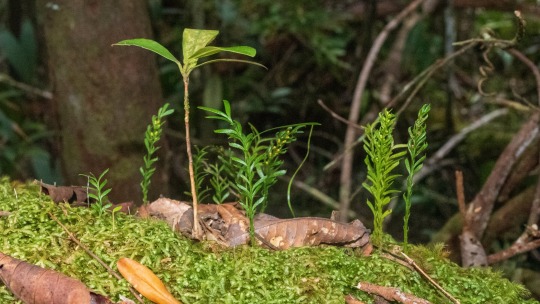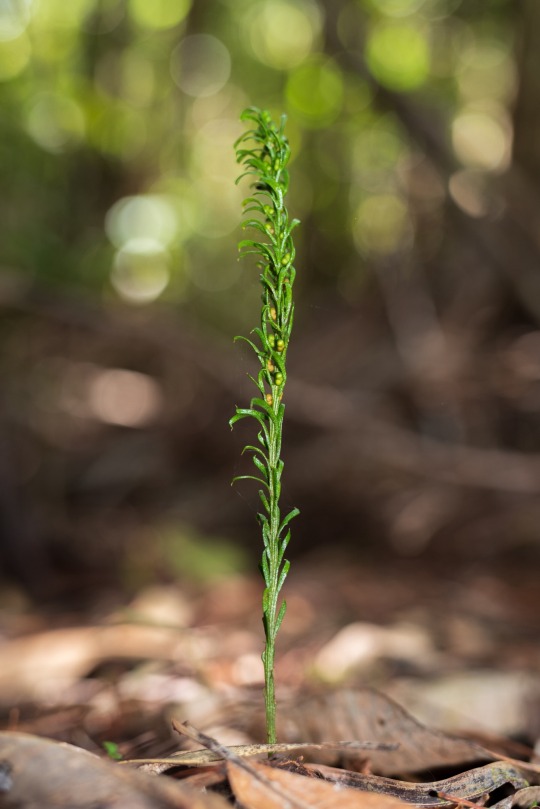#🐪🐫
Explore tagged Tumblr posts
Text

al qabid, oman by sandglass camp
5 notes
·
View notes
Text
ofc u bleed. i have to keep bleeding to live
0 notes
Text
Demand urgent action from the NT Government — Animal Liberation | Compassion without compromise
0 notes
Text

No deserto da crise precisamos seguir a orientação de Deus. Podemos fazer dela uma porta para os horizontes largos do triunfo ou podemos descer por meio dela aos valores mais sombrios do fracasso.

A crise pode ser a porta da esperança ou o calabouço do desespero.Pode ser que, como Isaque, todas as noites você olhe para o horizonte na esperança de ver a chegada de uma chuva restauradora que faça reverdecer o deserto da sua vida.

O grande perigo na encruzilhada da crise é tomar a direção errada. Isaque queria ir para o Egito, lugar de fartura, riqueza e segurança,Só os desbravadores, os idealistas e os sonhadores destemidos conseguem prosperar no deserto. crise do homem pode ser o tempo oportuno de Deus.

Devemos estar com os ouvidos atentos aos tempos da crise. É justamente nesses períodos que temos as maiores experiências com Deus.Quando todas as soluções da Terra entram em colapso, o céu aponta o rumo a seguir. O trono de Deus não enfrenta crise. Os propósitos de Deus não podem ser frustrados.
Livro: Hernandes Dias Lopes
Postagem 03/01/ 2013
38 notes
·
View notes
Text

Camel
10 notes
·
View notes
Text
38 notes
·
View notes
Text
which camel stuffed animal should i get………. There are so many good options……
3 notes
·
View notes
Text
4 notes
·
View notes
Text

2 notes
·
View notes
Text

Jack 😘 7981 http://www.steveb29.com/2024/05/blog-post_260.html
#jttlpgroup#Positive Images#Inspiration#Happiness#colors#colorful#Animals 🦛🐕🐪🐐#Architecture ⛪🏯#Blue 💙#Camels 🐪🐫#Jack 😘
1 note
·
View note
Text
Jaisalmer❤️ . .
#jaisalmerdiaries#jaisalmertravel#jaisalmerfort#jaislamerdesert🐪🐫☀️#jaisalmerfort😍#jaislamertrip#jaisalmertourism#jaisalmerdiaries🐫
0 notes
Text
Jaisalmer 🌺 . .
#jaisalmer#jaisalmerdiaries#ᴊᴀɪsᴀʟᴍᴇʀ#jaisalmerdiaries🐫#jaisalmerfort😍#jaisalmerfort#jaisalmer_fort#jaisalmer_trip#jaisalmer_diaries#jaisalmerdesert#jaisalmer😍#jaisalmerdesert🐪#jaisalmerdiaries💕#jaisalmertourism#rajasthan#rajasthani#rajasthan_tourism
0 notes
Text
Desert Safari., Jaisalmer.! . .
#jaisalmerfort😍#desert#desertlife#desertsafari#camelsafari#camelsafari🐫#camelsafarijaisalmer#samdesert#samdesertsafari🐪#samdesertnightsjaisalmer
0 notes
Text
This Tiny Fern Has The Largest Genome Of Any Organism On Earth
— By Royal Botanic Gardens, Kew | May 31, 2024

The fern species Tmesipteris oblanceolata from New Caledonia was found to have more than 50 times more DNA in each cell than humans. According to new research, its genome size is 160.45 gigabase pairs. Credit: Pol Fernandez
In a new study published in the journal iScience, researchers from the Royal Botanic Gardens, Kew and the Institut Botànic de Barcelona (IBB-CSIC) in Spain present a new record-holder for the largest amount of DNA stored in the nucleus of any living organism on the planet.
Coming in at more than 100 meters of unraveled DNA, the New Caledonian fork fern species Tmesipteris oblanceolata was found to contain more than 50 times more DNA than humans and has dethroned the Japanese flowering plant species Paris japonica, which has held this record since 2010.
In addition, the plant has achieved three Guinness World Records titles for Largest plant genome, Largest Genome, and Largest fern genome for the amount of DNA in the nucleus.
T. oblanceolata is a rare species of fern found on the island nation of New Caledonia, an overseas French territory situated in the Southwest Pacific, about 750 miles east of Australia, and some of the neighboring islands such as Vanuatu. The genus Tmesipteris is an understudied group of plants consisting of about 15 species, most of which occur across a range of Pacific Islands and Oceania.
Until now, scientists have only estimated the size of the genomes for two species of Tmesipteris—T. tannensis and T. obliqua—both of which were found to contain gigantic genomes, at 73.19 and 147.29 gigabase pairs (Gbp) respectively.
In 2023, lead authors Dr. Jaume Pellicer and Dr. Oriane Hidalgo, from the IBB and formerly of RBG Kew, traveled to New Caledonia to collect samples of Tmesipteris, which were then analyzed to estimate the size of their genomes. This involved isolating the nuclei of thousands of cells, staining them with a dye and then measuring how much dye had bound to the DNA within each nucleus—the more dye, the bigger the genome.
youtube
The previous record holder for the world's largest genome was the flowering plant, Paris Japonica at 148.89 gigabase pairs. Credit: RBG Kew
The analysis revealed the species T. oblanceolata to have a record-breaking genome size of 160.45 Gbp, which is about 7% larger than that of P. japonica (148.89 Gbp).
When unraveled, the DNA from each cell of this fern would stand taller than the Elizabeth Tower in Westminster, London, which is 96m tall and home to the world-famous Big Ben bell. For comparison, the human genome contains about 3.1 Gbp distributed across 23 chromosomes and when stretched out like a ball of yarn, the length of DNA in each cell only measures about 2m.
Dr. Pellicer, a researcher in evolutionary biology, says, "Tmesipteris is a unique and fascinating small genus of ferns, whose ancestors evolved about 350 million years ago—well before dinosaurs set foot on Earth—and it is distinguished by its mainly epiphytic habit [it grows mainly on the trunks and branches of trees] and restricted distribution in Oceania and several Pacific Islands.
"For a long time, we thought that breaking the previous size record of Paris japonica was going to be an impossible mission, but once again, the limits of biology have surpassed our most optimistic predictions.
"Based on our previous research, we anticipated the existence of giant genomes in Tmesipteris. That said, discovering the largest genome of them all is not just a feat of scientific exploration, but the result of an almost fourteen-year journey into the boundless complexity and diversity of plant genomes."
To date, scientists across the globe have estimated the genome sizes of more than 20,000 eukaryotic organisms, revealing in the process a wide range of genome sizes across the tree of life. These, in turn, have been found to have a profound impact not only on their anatomy, as bigger genomes need bigger cells to house them and take longer to replicate, but also how they function, evolve, and where and how they live.

The DNA of T. oblanceolata measures over 106m in length, making it taller than Elizabeth Tower in London, home to Big Ben. Credit: Pol Fernandez
In animals, some of the largest genomes include the marbled lungfish (Protopterus aethiopicus) at 129.90 Gbp and the Neuse River waterdog (Necturus lewisi) at 117.47 Gbp. In stark contrast, six of the largest-known eukaryotic genomes are held by plants, including the European mistletoe (Viscum album) at 100.84 Gbp.
Surprisingly, having a larger genome is usually not an advantage. In the case of plants, species possessing large amounts of DNA are restricted to being slow growing perennials, are less efficient at photosynthesis (the process by which plants convert the sun's energy into sugars) and require more nutrients (especially nitrogen and phosphates) to grow and compete successfully with their smaller-genomed neighbors. In turn, such effects may influence the ability of a plant to adapt to climate change and their risk of extinction.
Dr. Ilia Leitch, Senior Research Leader—Character Evolution, at RBG Kew, says, "Who would have thought this tiny, unassuming plant that most people would likely walk past without notice, could bear a world-beating record in genome size.
"Compared to other organisms, plants are incredibly diverse when viewed at the DNA level, and that should make us pause to think about their intrinsic value in the wider picture of global biodiversity. This discovery also raises many new and exciting questions about the upper limits of what is biologically possible, and we hope to solve these mysteries one day."
Adam Millward, Managing Editor of Guinness World Records, says, "To think this innocuous-looking fern boasts 50 times more DNA than humans is a humbling reminder that there's still so much about the plant kingdom we don't know, and that record holders aren't always the showiest on the outside."
#Youtube#Biology#Plants🪴 🌱#Animals 🐫🐪 🦔 🦓 🦒🐘 🐎 🦁 🐆 🐅 🦌 🐁 🐓#Molecular & Computational Biology#Fern#Genome 🧬#Organism#Phys.Org
0 notes
Text

#"🌞 Embark on the ultimate desert safari adventure this summer 2024! 🐪 Explore the mesmerizing beauty of the desert landscape#where golden dunes stretch as far as the eye can see. 🏜️ Experience the thrill of dune bashing#as skilled drivers navigate the sandy terrain in 4x4 vehicles#providing an adrenaline-pumping ride like no other.#Cool off amidst the heat with exhilarating activities such as sandboarding and camel riding#offering a unique perspective of the vast desert expanse. 🐫 Immerse yourself in Bedouin culture with traditional music#dance performances#and a mouthwatering feast under the stars.#Capture unforgettable moments against the backdrop of breathtaking sunsets and starlit skies#making memories to last a lifetime. 🌅 Don't miss out on this unforgettable summer adventure! Book your desert safari experience today.#Book Desert safari Now with: https://www.royaladventuretourism.com/#☀️#DesertSafari#SummerAdventure#ExploreTheUnknown#desertsafaridubai#Adventure#Dubai#Adventures
1 note
·
View note
Text
i can make pictures easily😀😃😄😁😆😅🤣😂🙂🙃🫠😉😊😇🥰😍🤩😘😗☺️😚😙🥲😋🤩😘😗☺️😚😙🥲😋😛😜🤪😝🤑🤗🤭🫢🫣🤫🤔🫡🤐🤨😐😑😶🫥😶🌫️😏😒🙄😬😮💨🤥🫨🙂↔️🙂↕️😌😔😪🤤😴😷🤒🤕🤢🤮🤧🥵🥶🥴😵😵💫🤯🤠🥳🥸😎🤓🧐😕🫤😟🙁☹️😮😯😲😳🥺🥹😦😧😨😰😥😢😭😱😣😣😞😓😩😫🥱😤😡😠🤬😈👿💀☠️💩🤡👹👺👻👽👾🤖😺😸😹😻😼😽🙀😿😾🙈🙉🙊💋💌💘💝💖💗💓💞💕💟❣️💔❤️🔥❤️🩹❤️🩷🧡💛💚💙🩵💜🤎🖤🩶🤍💯💢💥💫💦💨🕳💣💬🗨🗯💭💤👋🤚🖐✋️🖖🫱🫲🫳🫴🫷🫸👌🤌🤏✌️🤞🫰🤟🤘🤙👈👉👆🖕👇☝️🫵👍👎✊️👊🤛🤜👏🙌🫶👐🤲🤝🙏✍️💅🤳💪🦾🦿🦵🦶👂🦻👃🧠🫀🫁🦷🦴👀👁👅👄🫦👶🧒👦👧🧑👱👨🧔♂️🧔♀️🧔👨🦰👨🦱👨🦳👨🦲👩👩🦰🧑🦰👩🦱🧑🦱👩🦳🧑🦳👩🦲🧑🦲👱♂️👱♀️👴👵🧓🙍♂️🙍♀️🙍🙎♂️🙎♀️🙎🙅♂️🙅♀️🙅🙆♂️🙆♀️🙆💁♂️💁♀️💁🙋♂️🙋♀️🙋🧏♂️🧏♀️🧏🙇♂️🙇♀️🙇🤦♂️🤦♀️🤦🤷♂️🤷♀️🤷👨⚕️👩⚕️🧑⚕️👨🎓👩🎓🧑🎓👨🏫👩🏫🧑🏫👨⚖️👩⚖️🧑⚖️👨🌾👩🌾🧑🌾👨🍳👩🍳🧑🍳👨🔧👩🔧🧑🔧👨🏭👩🏭🧑🏭👨💼👩💼🧑💼👨🔬👩🔬👨💻👩💻🧑💻👨🎤👩🎤🧑🎤👨🎨👩🎨🧑🎨👨✈️👩✈️🧑✈️👨🚀👩🚀🧑🚀👨🚒👩🚒🧑🚒👮♂️👮♀️👮🕵♂️🕵♀️🕵💂♂️💂♀️💂🥷👷♂️👷♀️👷🫅🤴👸👳♂️👳♀️👳👲🧕🤵♂️🤵♀️🤵👰♂️👰♀️👰🤰🫃🫄🤱👨🍼👩🍼🧑🍼👼🎅🤶🧑🎄🦸♂️🦸♀️🦸🦹♂️🦹♀️🦹🧙♂️🧙♀️🧙🧚♂️🧚♀️🧚🧛♂️🧛♀️🧛🧜♂️🧜♀️🧜🧝♂️🧝♀️🧝🧞♂️🧞♀️🧞🧟♂️🧟♀️🧟🧌💆♂️💆♀️💆💇♂️💇♀️💇🚶♂️🚶♂️➡️🚶♀️🚶♀️➡️🚶🚶➡️🧍♂️🧍♀️🧍🧎♂️🧎♂️➡️🧎♀️🧎♀️➡️🧎🧎➡️👨🦯👨🦯➡️👩🦯👩🦯➡️🧑🦯🧑🦯➡️👨🦼👨🦼➡️👩🦼👩🦼➡️🧑🦼🧑🦼➡️👨🦽👨🦽➡️👩🦽👩🦽➡️🧑🦽🧑🦽➡️🏃♂️🏃♂️➡️🏃♀️🏃♀️➡️🏃🏃➡️🕺💃🕴👯♂️👯♀️👯🧖♂️🧖♀️🧖🧗♂️🧗♀️🧗🤺🏇⛷️🏂🏌♂️🏌♀️🏌🏄♂️🏄♀️🏄🚣♂️🚣♀️🚣🏊♂️🏊♀️🏊⛹️♂️⛹️♀️⛹️🏋♂️🏋♀️🏋🚴♂️🚴♀️🚴🚵♂️🚵♀️🚵🤸♂️🤸♀️🤸🤼♂️🤼♀️🤼🤽♂️🤽♀️��🤾♂️🤾♀️🤾🤹♂️🤹♀️🤹🧘♂️🧘♀️🧘🛀🛌👬👫👭🧑🤝🧑👨❤️💋👨👩❤️💋👨👩❤️💋👩💏👨❤️👨👩❤️👨👩❤️👩💑👩👩👦👨👩👧👩👩👧👦👨👩👦👦👨👩👧👧👨👦👩👦🗣👤👥️🫂👣🧑🧑🧒🧑🧑🧒🧒🧑🧒🧑🧒🧒🐵🐒🦍🦧🐶🐕🦮🐕🦺🐩🐺🦊🦝🐱🐈🐈⬛🦁🐯🐅🐆🐴🫎🫏🐎🦄🦓🦌🦬🐮🐂🐃🐄🐷🐖🐗🐽🐏🐑🐐🐪🐫🦙🦒🐘🦣🦏🦛🐭🐁🐀🐹🐰🐇🐿🦫🦔🦇🐻🐨🐻❄️🐼🦥🦦🦨🦘🦡🐾🦃🐔🐓🐣🐤🐥🐦🐧🕊🦅🦆🦢🦉🦤🪶🦩🦚🦜🪽🐦⬛🪿🐦🔥🐸🐊🐢🦎🐍🐲🐉🦕🦖🐳🐋🐬🦭🐟🐠🐡🦈🐙🦀🦞🦐🦑🐚🪸🪼🐌🦋🐛🐜🐝🪲🐞🦗🕷🪳🕸🦂🦟🪰🪱🦠💐🌸💮🪷🏵🌹🥀🌺🌻🌼🌷🪻⚘️🌱🪴🌲🌳🌴🌵🌾🌿☘️🍀🍁🍂🍃🪹🪺🍇🍈🍉🍊🍋🍌🍍🥭🍎🍏🍐🍑🍒🍓🫐🥝🍅🫒🥥🍋🟩🥑🍆🥔🥕🌽🌶🫑🥒🥬🥦🧄🧅🍄🥜🫘🌰🫚🫛🍄🟫🍞🥐🥖🫓🥨🥯🥞🧇🧀🍖🍗🥩🥓🍔🍟🍕🌭🥪🌮🌯🫔🥙🧆🥚🍳🥘🍲🫕🥣🥗🍿🧈🧂🥫🍱🍘🍙🍚🍛🍜🍝🍠🍢🍣🦪🍤🍥🥮🍡🥟🥠🥡🍦🍧🍨🍩🍪🎂🍰🧁🥧🍫🍬🍭🍮🍯🍼🥛☕️🫖🍵🍶🍾🍷🍸🍹🍺🍻🥂🥃🫗🥤🧋🧃🧉🧊🥢🍽🍴🥄🔪🫙🏺🌍🌎🌏🌐🗺🧭🏔⛰️🌋🗻🏕🏖🏜🏝🏞🏟🏛🏗🧱🪨🪵🛖🏘🏚🏠🏡🏢🏣🏤🏥🏦🏨🏩🏪🏫🏬🏭🏯🏰💒🗼🗽⛪️🕌🛕🕍⛩️🕋⛲️⛺️🌁🌃🏙🌄🌅🌆🌇🌉♨️🎠🛝🎡🎢💈🎪🚂🚝🚄🚅🚆🚇🚈🚉🚊🚝🚞🚋🚌🚍🚎🚐🚑🚒🚓🚔🚕🚖🚗🚘🚙🛻🚚🚛🚜🏎🏍🛵🦽🦼🛺🚲🛴🛹🛼🚏🛣🛤🛢⛽️🛞🚨🚥🚦🛑🚧⚓️🛟⛵️🛶🚤🛳⛴️🛥🚢✈️🛩🛫🛬🪂💺🚁🚟🚠🚡🛰🚀🛸🛎🧳⌛️⏳️⌚️⏰️⏱️⏲️🕰🕛🕧🕐🕜🕑🕝🕒🕞🕓🕟🕔🕠🕕🕡🕖🕢🕗🕣🕘🕤🕙🕥🕚🕦🌑🌒🌓🌔🌕🌖🌗🌘🌙🌚🌛🌜🌡☀️🌝🌞🪐⭐️🌟🌠🌌☁️⛅️⛈️🌤🌥🌦🌧🌨🌩🌪🌫🌬🌀🌈🌂☂️☔️⛱️⚡️❄️☃️⛄️☄️🔥💧🌊🎃🎄🎆🎇🧨✨️🎈🎉🎊🎋🎍🎎🎏🎐🎑🧧🎀🎁🎗🎟🎫🎖🏆🏅🥇🥈🥉⚽️⚾️🥎���🏐🏈🏉🎾🥏🎳🏏🏑🏒🥍🏓🏸🥊🥋🥅⛳️⛸️🎣🤿🎽🎿🛷🥌🎯🪀🪁🎱🔮🪄🧿🪬🎮🕹🎰🎲🧩🧸🪅🪩🪆♠️♥️♦️♣️♟️🃏🀄🎴🎭🖼🎨🧵🪡🧶🪢👓🕶🥽🥼🦺👔👕👖🧣🧤🧥🧦👗👘🥻🩱🩲🩳👙👚🪭👛👜👝🛍🎒🩴👞👟🥾🥿👠👡🩰👢🪮👑👒🎩🎓🧢🪖⛑️📿💄💍💎🔇🔈🔉🔊📢📣📯🔔🔕🎼🎵🎶🎙🎚🎛🎤🎧📻🎷🪗🎸🎹🎺🎻🪕🥁🪘🪇🪈📱📲☎️📞📟📠🔋🪫🔌💻🖥🖨⌨️🖱🖲💽💾💿📀🧮🎥🎞📽🎬📺📷📸📹📼🔍🔎🕯💡🔦🏮🪔📔📕📖📗📘📙📚📓📒📃📜📄📰🗞📑🔖🏷💰🪙💴💵💶💷💸💳🧾✉️📧📨📩📤📥📦📫📪📬📭📮🗳✏️✒️🖋🖊🖌🖍📝💼📁📂🗂📅📆🗒🗓📇📈📉📊📋📌📍📎🖇📏📐✂️🗃🗄🗑🔒🔓🔏🔐🔑🗝🔨🪓⛏️⚒️🛠🗡⚔️🔫🪃🏹🛡🪚🔧🪛🔩⚙️🗜⚖️🦯🔗⛓️⛓️💥🪝🧰🧲🪜⚗️🧪🧫🧬🔬🔭📡💉🩸💊🩹🩼🩺🩻🚪🛗🪞🪟🛏🛋🪑🚽🪠🚿🛁🪤🪒🧴🧷🧹🧺🧻🪣🧼🫧🪥🧽🧯🛒🚬⚰️🪦⚱️🗿🪧🪪🏧🚮🚰♿️🚹🚺🚻🚼🚾🛂🛃🛄🛅⚠️🚸⛔️🚫🚳🚭🚯🚱🚷📵🔞☢️☣️⬆️↗️➡️↘️⬇️↙️⬅️↖️↕️↔️↩️↪️⤴️⤵️🔃🔄🔙🔚🔛🔜🔝🛐⚛️🕉✡️☸️☯️✝️☦️☪️☮️🕎🔯🪯♈️♉️♊️♋️♌️♍️♎️♏️♐️♑️♒️♓️⛎️🔀🔁🔂▶️⏩️⏭️⏯️◀️⏪️⏮️🔼⏫️🔽⏬️⏸️⏹️⏺️⏏️🎦🔅🔆📶🛜📳📴♀️♂️⚧️✖️➕️➖️➗️🟰♾️‼️⁉️❓️❔️❕️❗️〰️💱💲⚕️♻️⚜️🔱📛🔰⭕️✅️☑️✔️❌️❎️➰️➿️〽️✳️✴️❇️©️®️™️#️⃣*️⃣0️⃣1️⃣2️⃣3️⃣4️⃣5️⃣6️⃣7️⃣8️⃣9️⃣🔟🔠🔡🔢🔣🔤🅰️🆎️🅱️🆑️🆒️🆓️ℹ️🆔️Ⓜ️🆕️🆖️🅾️🆗️🅿️🆘️🆙️🆚️🈁️🈂️🈷️🈶️🈯️🉐️🈹️🈚️🈲️🉑️🈸️🈴️🈳️㊗️㊙️🈺️🈵️🔴🟠🟡🟢🔵🟣🟤⚪️⚫️🟥🟧🟨🟩🟦🟪🟫���⬜️◼️◻️◾️◽️▪️▫️🔶️🔷️🔸️🔹️🔺️🔻💠🔘🔲🔳🏁🚩🏴🏳🏳️🌈🏳️⚧️🏴☠️🇦🇨🇦🇩🇦🇪🇦🇫🇦🇬🇦🇮🇦🇱🇦🇲🇦🇴🇦🇶🇦🇷🇦🇸🇦🇹🇦🇺🇦🇼🇦🇽🇦🇿🇧🇦🇧🇧🇧🇩🇧🇪🇧🇫🇧🇬🇧🇭🇧🇮🇧🇯🇧🇱🇧🇲🇧🇳🇧🇴🇧🇶🇧🇷🇧🇸🇧🇹🇧🇻🇧🇼🇧🇾🇧🇿🇨🇦🇨🇨🇨🇩🇨🇫🇨🇬🇨🇭🇨🇮🇨🇰🇨🇱🇨🇲🇨🇳🇨🇴🇨🇵🇨🇷🇨🇺🇨🇻🇨🇼🇨🇽🇨🇾🇨🇿🇩🇪🇩🇬🇩🇯🇩🇰🇩🇲🇩🇴🇩🇿🇪🇦🇪🇨🇪🇪🇪🇬🇪🇭🇪🇷🇪🇸🇪🇹🇪🇺🇫🇮🇫🇯🇫🇰🇫🇲🇫🇴🇫🇷🇬🇦🇬🇧🇬🇩🇬🇪🇬🇫🇬🇬🇬🇭🇬🇮🇬🇱🇬🇲🇬🇳🇬🇵🇬🇶🇬🇷🇬🇸🇬🇹🇬🇺🇬🇼🇬🇾🇭🇰🇭🇲🇭🇳🇭🇷🇭🇹🇭🇺🇮🇨🇮🇩🇮🇪🇮🇲🇮🇳🇮🇴🇮🇶🇮🇷🇮🇸🇮🇹🇯🇪🇯🇲🇯🇴🇯🇵🇰🇪🇰🇬🇰🇭🇰🇮🇰🇲🇰🇳🇰🇵🇰🇷🇰🇼🇰🇾🇰🇿🇱🇦🇱🇧🇱🇨🇱🇮🇱🇰🇱🇷🇱🇸🇱🇹🇱🇺🇱🇻🇱🇾🇲🇦🇲🇨🇲🇩🇲🇪🇲🇫🇲🇬🇲🇭🇲🇰🇲🇱🇲🇲🇲🇳🇲🇴🇲🇵🇲🇶🇲🇷🇲🇸🇲🇹🇲🇺🇲🇻🇲🇼🇲🇽🇲🇾🇲🇿🇳🇦🇳🇨🇳🇪🇳🇫🇳🇬🇳🇮🇳🇱🇳🇴🇳🇵🇳🇷🇳🇺🇳🇿🇴🇲🇵🇦🇵🇪🇵🇫🇵🇬🇵🇭🇵🇰🇵🇱🇵🇲🇵🇳🇵🇷🇵🇸🇵🇹🇵🇼🇵🇾🇶🇦🇷🇪🇷🇴🇷🇸🇷🇺🇷🇼🇸🇦🇸🇧🇸🇨🇸🇩🇸🇪🇸🇬🇸🇭🇸🇮🇸🇯🇸🇰🇸🇱🇸🇲🇸🇳🇸🇴🇸🇷🇸🇸🇸🇹🇸🇻🇸🇽🇸🇾🇸🇿🇹🇦🇹🇨🇹🇩🇹🇫🇹🇬🇹🇭🇹🇯🇹🇰🇹🇱🇹🇲🇹🇳🇹🇴🇹🇷🇹🇹🇹🇻🇹🇼🇹🇿🇺🇦🇺🇬🇺🇲🇺🇳🇺🇸🇺🇾🇺🇿🇻🇦🇻🇨🇻🇪🇻🇬🇻🇮🇻🇳🇻🇺🇼🇫🇼🇸🇽🇰🇾🇪🇾🇹🇿🇦🇿🇲🇿🇼🏴🏴🏴
3K notes
·
View notes